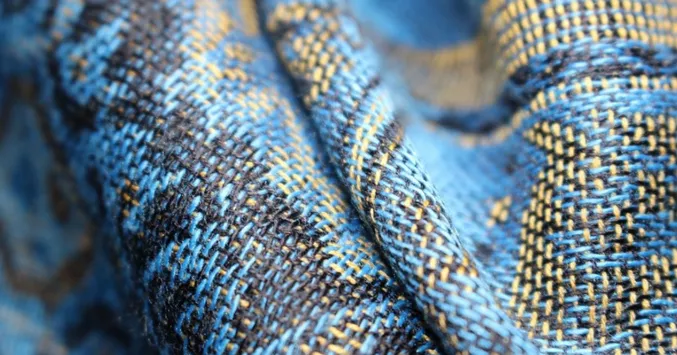“Basic weaving patterns have diverse applications today. Workers need to improve their skills to meet higher fabric requirements. Shuttle weaving and knitting are popular styles used in Fashion Bandung. Learn more in the article below!”
What is the weave?
In recent times, the textile industry has experienced significant advancements in technology and techniques, leading to notable changes. One area that has witnessed significant improvement is the quality of woven fabric, which has become better and of higher quality. The weaving style plays a crucial role in determining the overall quality of the fabric and its surface properties. Essentially, the weaving style refers to the specific arrangement of horizontal and vertical fabric threads according to certain standards. It is through this arrangement that patterns and shapes are created on the fabric surface, adding to its aesthetic appeal.
Weaving is a versatile craft that encompasses a wide range of weaving styles and techniques, each with its own set of rules and principles. These styles are chosen based on factors such as the intended use of the fabric, the specific application it will be used for, and the preference of the weaver. In order to create woven fabric, there are four fundamental styles that adhere to the principles of weaving fabric fibers.
- Knitting
- Twill weave
- Woven peak
- Weave
- Small jacquard
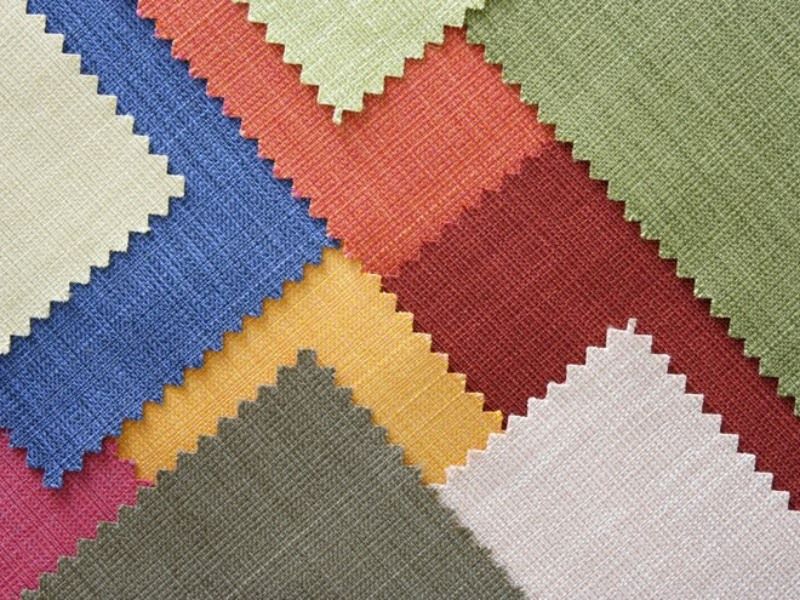
The way the threads are woven together will ultimately determine the appearance and characteristics of the fabric.
The weaving styles that are currently the most basic and popular.
Knitted style
Knit Fabric, also known as English knitting style, is a weaving technique that is distinguished by the use of alternating loops of yarn. In this style, the knitting yarn is worked horizontally to create rows of vertical loops.
Knitting styles can produce both flat fabrics and tubular fabrics. In the knitting process, horizontal loops are referred to as Courses, while vertical loops are called Wales. These two lines, Courses and Wales, intersect at a 90-degree angle.
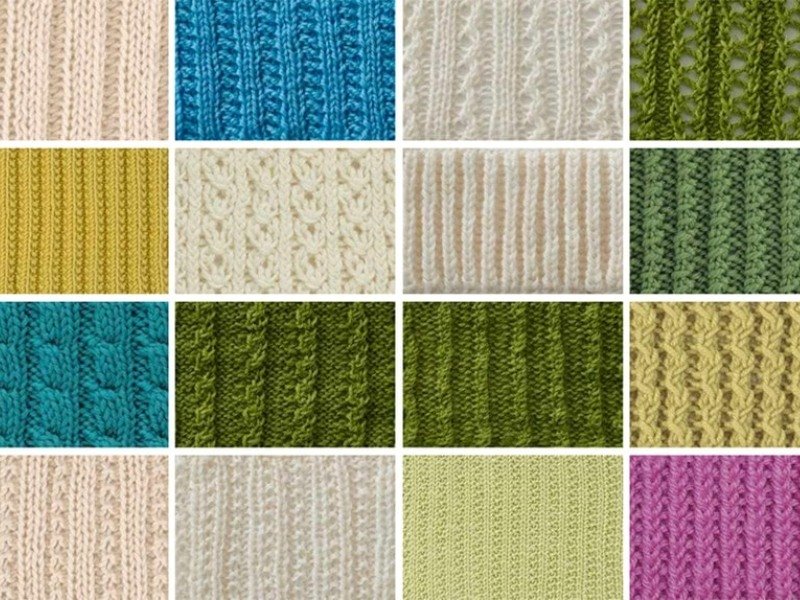
This article aims to provide a comprehensive explanation of the concept and key characteristics of knitted fabrics. Knitted fabrics are textiles created by interlocking loops of yarn in a specific pattern. The process of knitting involves manipulating the yarn with knitting needles or machines to form a fabric structure.
The key characteristic of knitted fabrics is their ability to stretch and recover their shape due to the interlocking loops. This elasticity makes them comfortable to wear and allows for a greater range of movement. Knitted fabrics also have inherent breathability, as the loops create small gaps that promote air circulation, making them suitable for both warm and cool weather.
Additionally, knitted fabrics can be produced in various weights and thicknesses, offering options for different applications. They can be lightweight and sheer, suitable for undergarments or summer clothing, or heavy and bulky, perfect for outerwear or winter items. The range of fabric weights also allows for customization in terms of warmth, drape, and texture.
Moreover, knitted fabrics have excellent wrinkle resistance, reducing the need for ironing. This quality makes them ideal for travel or for individuals who prefer low-maintenance garments. Additionally, knitted fabrics are known for their durability and resistance to abrasion, with the interlocking loops providing structural integrity.
Knitted fabrics also offer versatility in terms of design and pattern. They can be produced in a wide range of colors, patterns, and textures to meet the demands of consumers. The ability to incorporate intricate designs, geometric patterns, and jacquard motifs adds visual interest and enhances the overall aesthetic appeal of knitted fabrics.
Overall, knitted fabrics combine comfort, versatility, and durability, making them a preferred choice for a wide range of applications, including clothing, accessories, and home furnishings. The diverse characteristics of knitted fabrics make them a fundamental component of the fashion and textile industry.
Knitted fabric is known for its excellent elasticity and high stretchability. This type of fabric is breathable and requires minimal maintenance, as it is less prone to wrinkling. Additionally, knitted fabric maintains its straight shape even after wear. This allows the wearer to always feel comfortable and move with ease.
There are two fundamental knitting styles: warp knitting and weft knitting. These styles vary depending on the type of yarn used and the method of knitting, resulting in a wide range of fabric options.
When it comes to weaving styles, they involve using a needle in a specific manner as follows:
Weft knitting style
Weft knitting is a specific technique in which the yarns are interlaced horizontally to create a fabric. Unlike other knitting methods, both sides of the fabric are identical, meaning there is no distinction between a right or wrong side.

Weft knitting is a specific style of knitting where the yarns are interlocked horizontally, creating a woven effect.
The knitting pattern can be categorized into two types: single needle knitting and double needle knitting. In single needle knitting, it is commonly employed to create Jersey and Lacoste fabrics. On the other hand, double needle knitting is frequently utilized for producing Terry, French cotton, Rib, and other similar fabrics.
Warp knitting style
Unlike weft knitting, which involves yarns being interlaced horizontally, warp knitting involves yarns being interlaced vertically in the lengthwise direction. Due to this interlacing technique, the resulting fabric will have distinct right and left sides. Warp knitting is frequently used in the production of Plum Blossom and Raschel fabrics.
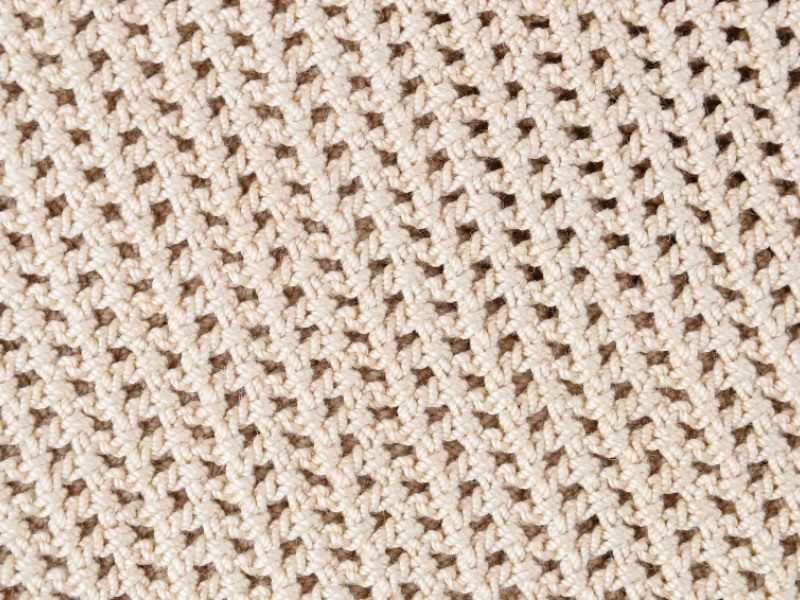
Warp knitting is a technique in which the yarns are intertwined lengthwise, with each yarn being woven alternatively.
Dot weave
The dot weave, also known as plain weave or single weave plain 1:1, is a basic and simple weaving style. It involves weaving the warp threads over the weft threads in a top-to-bottom manner.
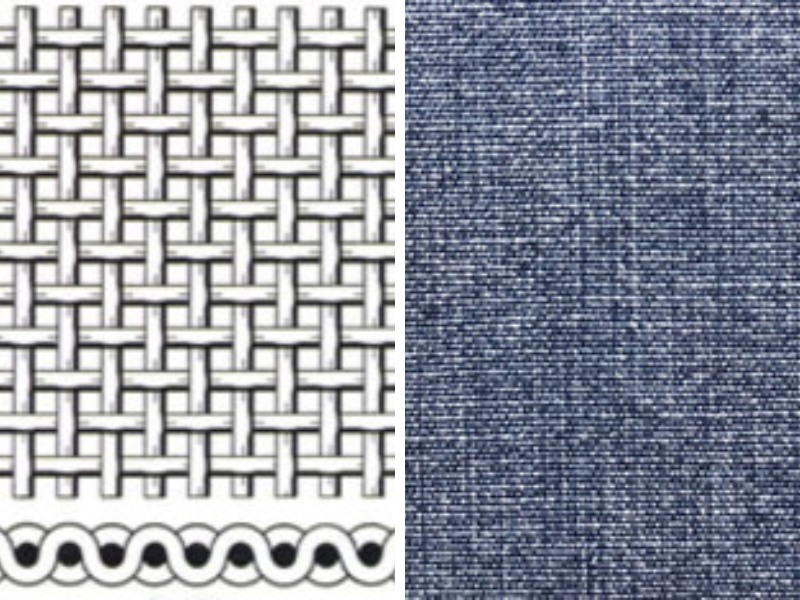
Plain weave, also referred to as single weave, is a fundamental weaving technique characterized by a simple interlacing pattern. In this method, the weft thread passes over and under each warp thread in a regular and alternating manner, creating a balanced and uniform fabric structure.
Plain weave is a type of fabric weave that has two identical sides, meaning it does not have a distinct right and left side. The texture of plain weave fabric is stiff and strong, resulting in durability. In the fashion and garment industry, plain weave fabric is commonly used for men’s shirts, t-shirts, and other apparel items. Additionally, it can also be found in some decorative furniture within homes.
Twill weave
Twill weave is a type of weaving pattern that originates from England. It is characterized by its diagonal knitting rule, where the warp threads are interlaced with the weft threads in a specific sequence. The weaving process starts from the top and goes downwards. In twill weave, the weft thread is passed through one or more warp threads in a consistent pattern.
This operation of weaving is done multiple times to ensure that the correct rules and order of the up and down fibers are followed, resulting in the formation of a distinctive diagonal pattern. Fabrics woven in this diagonal pattern tend to have a softer and smoother surface compared to those woven in a plain pattern in basic weaving styles. Additionally, they exhibit high wrinkle resistance and are easier to maintain.
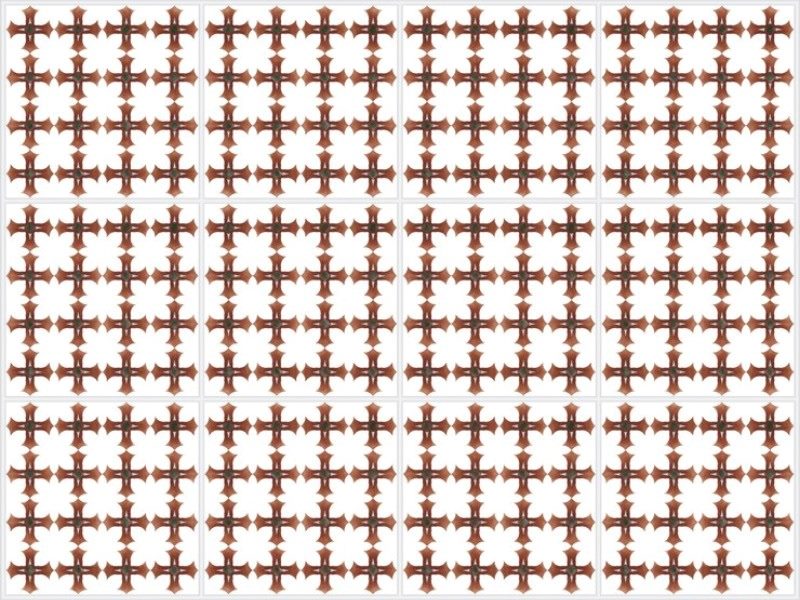
Twill weave is a type of fabric weaving technique that creates a distinct diagonal pattern on the surface of the fabric.
Woven fabrics typically have distinct and intricate diagonal lines on their front side. The right side of the fabric usually exhibits a well-defined diagonal pattern formed by the longitudinal yarns (warp). On the other hand, the back side of the fabric displays the crosswise yarns (weft), creating a different visual effect.
The twill weave fabric is primarily used in the production of men’s jeans to create fashionable patterns. This particular fabric has a diagonal pattern that can run in two different directions, either forming an S-shape or a Z-shape. These patterns add visual interest and uniqueness to the jeans, making them more attractive to consumers.
Parallel weave
Parallel weave, also known as satin weave, is a specific weaving technique where the weft yarns are interlaced over one warp yarn and then passed under multiple warp yarns before being interlaced over another warp yarn. This process creates a surface where numerous weft yarns run parallel to each other, enhancing the appearance of the right side of the fabric.
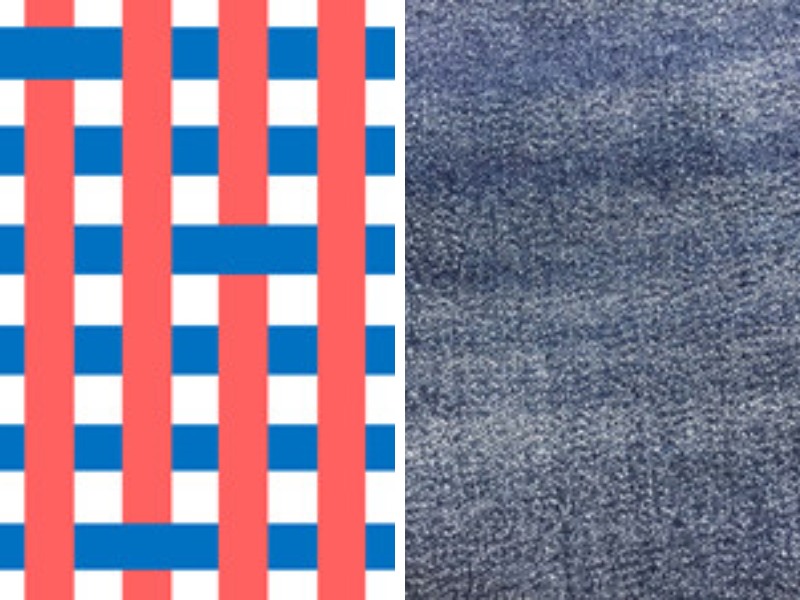
The satin weave fabric is known for its distinctive high gloss appearance and aesthetic appeal.
The fabric woven in a segmented pattern has a distinct shine on its surface. It is divided into two sides, the left and right, similar to twill fabric. However, this particular style of weaving lacks durability and does not have a long lifespan.
The weave mentioned here refers to a specific type of weave commonly used in the production of satin fabric. Satin fabric is a luxurious and smooth fabric that is often used for making winter clothing. Some examples of winter clothing items that are made from satin fabric include men’s jackets, wedding dresses, and pajamas, among others. This type of fabric is chosen for winter clothing due to its softness, warmth, and elegant appearance. It provides comfort and insulation during the cold winter months, making it ideal for creating stylish and cozy garments.
Small jacquard weave
Small jacquard weaving is a sophisticated technique that involves weaving patterns beyond the basic ones. It incorporates two additional styles: modified weaving (also known as derivative weaving) and combined weaving. These patterns build upon the basic weaving techniques by introducing more complex or additional joints. As a result, the fabric produced through small jacquard weaving exhibits a distinctive and intriguing surface texture that sets it apart from other fabrics.
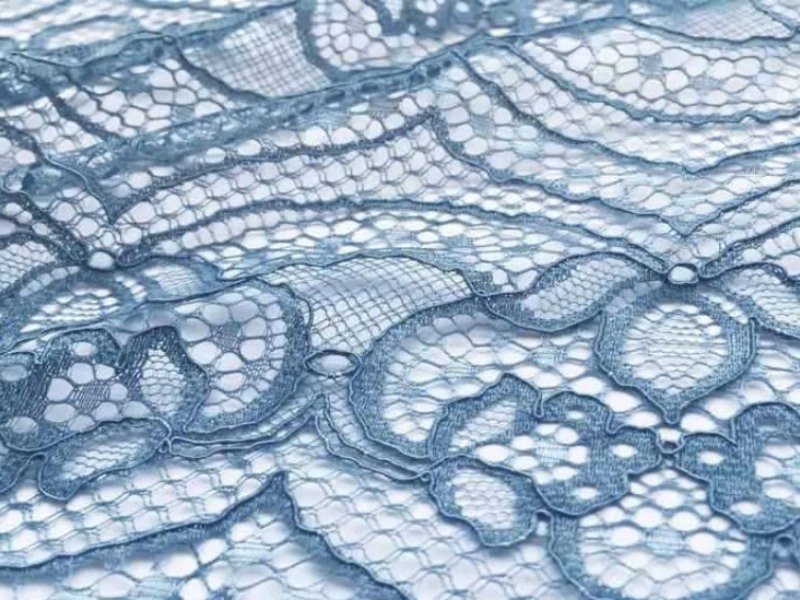
The jacquard weave is a complex and intricate method of weaving that can be categorized into two distinct styles. This weaving technique requires a considerable amount of skill and expertise to master.
Today, weaving styles have become extremely diverse, resulting in an array of fabrics with various designs, shapes, colors, and properties. The aim of the information provided by Fashion Bandung is to offer useful insights into the world of basic weaving patterns.
Fashion Bandung is a brand that specializes in providing fashionable clothing and accessories for men. With a wide range of stylish options, Fashion Bandung offers the latest trends and timeless classics to cater to various fashion preferences. Whether it’s formal attire, casual wear, or stylish accessories, Fashion Bandung has the perfect items to help men enhance their personal style and make a statement. With a focus on quality and attention to detail, Fashion Bandung ensures that every piece they offer is not only fashionable but also durable and comfortable. Men can confidently express themselves and elevate their fashion game with the diverse and trendy collection from Fashion Bandung.
Click on the link below to access additional information:
“See more”
Cotton woven rope refers to a type of rope that is made from cotton fibers that have been woven together. It is a versatile and durable material that is commonly used for various applications.
There are several advantages of using cotton woven rope. Firstly, cotton is a natural and biodegradable material, making it an environmentally friendly option. It is also soft and flexible, making it comfortable to handle and easy to tie knots with. Additionally, cotton rope has good tensile strength, allowing it to withstand heavy loads without breaking.
In terms of new applications, cotton woven rope is finding its way into various industries. One such application is in the home decor sector, where cotton rope is used for making decorative items such as macrame wall hangings, plant hangers, and curtains. Another emerging use is in the fashion industry, where cotton rope is being incorporated into accessories like belts, handles for bags, and jewelry. Furthermore, cotton woven rope is also being explored for its potential in sports and recreational activities, such as climbing ropes and exercise equipment.
Overall, cotton woven rope offers numerous advantages and its versatility is leading to new and exciting applications across various industries.
Combed ring-spun cotton is a type of fabric that has been meticulously processed to enhance its quality. The cotton fibers are combed to remove any impurities and short fibers, resulting in a smoother and more durable fabric. The term “ring-spun” refers to the method of spinning the cotton fibers into yarn, which creates a softer and finer texture compared to regular spun cotton.
Combed ring-spun cotton fabric has several practical applications due to its superior quality. It is commonly used in making high-quality garments, such as t-shirts, shirts, and dresses, as it offers a luxurious feel and increased durability. The smooth surface and fine texture of the fabric also make it ideal for printing and embroidery, allowing for intricate designs with sharp details.
Additionally, combed ring-spun cotton is highly absorbent, making it suitable for towels and bathrobes. Its breathability and moisture-wicking properties also make it a popular choice for activewear, underwear, and socks, providing comfort and preventing excessive sweating.
Furthermore, the durability of combed ring-spun cotton fabric makes it suitable for home textiles, such as bed sheets, pillowcases, and curtains. Its sturdy nature ensures long-lasting performance and resistance to wear and tear.
Overall, combed ring-spun cotton is a versatile fabric that offers superior quality, durability, softness, and absorbs moisture efficiently. These characteristics make it a preferred choice for various practical applications in the textile industry.
Knit fabric is a type of textile that is created by interlocking a series of loops together. These loops are formed by using a single thread or yarn that is manipulated in a specific way by knitting needles or machines. Knit fabric can be made from a variety of materials, including cotton, wool, silk, synthetic fibers, and blends of different materials.
There are several characteristics of knit fabric that set it apart from other types of textiles. Firstly, it has a unique stretch and recovery ability, meaning that it can be stretched out of shape but will bounce back to its original form once released. This makes knit fabric highly flexible and comfortable to wear. Additionally, knit fabric is known for its breathability as the loops in the fabric create small air pockets, allowing air circulation and preventing overheating.
Knit fabric comes in a wide range of textures, weights, and patterns, making it versatile for various applications. It can be knitted to have a smooth surface or a textured one, giving designers the freedom to create different aesthetic effects. The weight of the knit fabric can vary as well, from lightweight and sheer fabrics to heavy and thick ones, suitable for different seasons and purposes.
Knit fabric is often used in the fashion industry for making clothing items such as t-shirts, sweaters, leggings, and dresses. It is also commonly used for creating accessories like scarves, hats, and gloves. Due to its stretch and easy-care properties, knit fabric is favored for activewear and sportswear as it allows for freedom of movement and wicks away moisture.
In addition to its use in fashion, knit fabric also finds applications in other industries. It is used in home textiles like bedding, blankets, and upholstery due to its softness and comfort. Knit fabric is also utilized in the automotive and medical sectors for making seat covers, interior linings, and surgical garments.
Overall, knit fabric is a versatile textile that offers various benefits including stretch, comfort, breathability, and aesthetic possibilities. Its wide range of applications makes it a popular choice among designers, manufacturers, and consumers alike.

